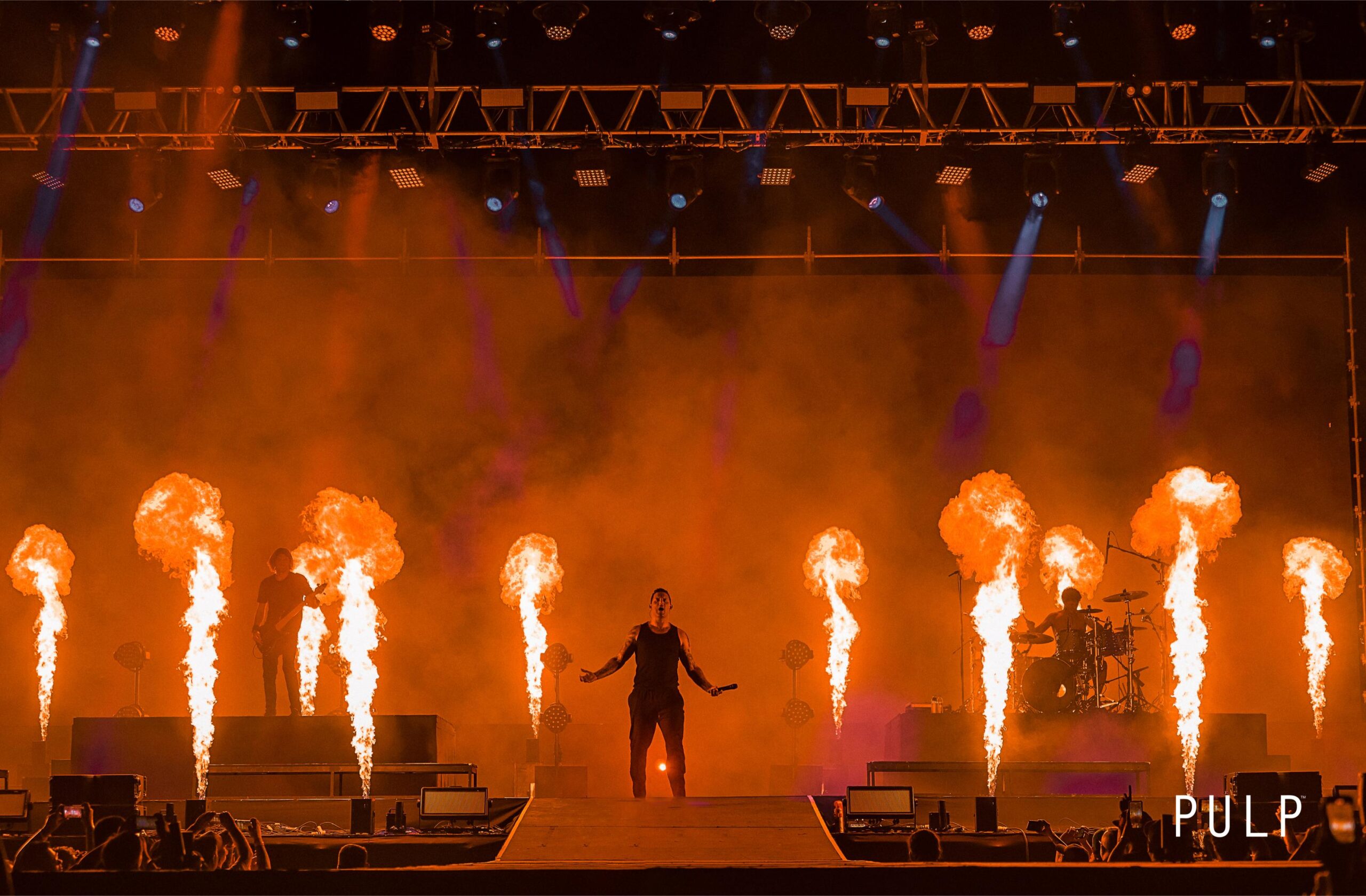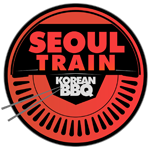
The Day The Music Died
By Joey Dizon
The silence was deafening.
They say that everything that comes in threes is perfect: omne trium perfectum. There is a Latin belief that three is a perfect number—a number of harmony, wisdom, and understanding. I guess there’s truth to that. I mean, for example, rock paper scissors, the three bears Goldilocks pissed off, the three little pigs, and the first three Metallica albums. But there’s also a saying that trouble comes in threes, too—bad luck, sickness, and, well, death.
I don’t know why I mindlessly searched superstitious nonsense on Google, but I remember there were three specific moments of deafening silence during PULP Summer Slam XX – Worlds Collide: The End that had an unexpectedly overwhelming and profound effect on me. Weeks before, I had numerous chats with PULP Boss Vernon Go: memories from previous Slams, crazy people we’ve met through the years, awesome performances, and, well…how we hoped it would all end.
But I knew that I was spending a great deal of time thinking about all that, and I was waiting for the reality to hit me as I counted down the days to the show date.
I. ENTERING FOR ONE LAST TIME
As I was walking through Gate 6 of the Amoranto Stadium, it was eerily quiet (I think it was during the changeover right after the opening sets of Japan’s PROMPTS and South Korea’s ROLLING QUARTZ), and almost no one was in sight—a far cry from the chaos of PULP Summer Slams years ago. As I made my way through security, everything seemed to be in perfect working order. I could see members of PULP Royalty happily eating, drinking, and chatting away, stage staff working hard and wheeling equipment on and off the side of the stage, which was the biggest and tallest it had ever been. Though the afternoon sky turned dark and gloomy, things seemed… peaceful. Then, as if some invisible hand cranked the volume knob in my ears, one of the first things I heard was the warm greeting of PULP Royalty member Indz Chan, filling me in on how awesome the performances were and how glad he was that everyone in attendance made it. After going on a quick solo recon of the pit, I had to sit down and take it all in.
“This is what two decades of PULP Summer Slam feels like,” I told myself. I was there for the very first—and I am proud to say I was. I remember when Vernon initially proposed the idea at the old office in E. Rodriguez. It seemed fucking crazy, to be honest: put together as many local bands as humanly possible, have a massive stage, sound and lights rig, and drink and party all night long…during a time when the words “local rock bands” weren’t exactly a popular part of the fabric of OPM. It was a celebration of local music, aiming to put the spotlight on both hardworking, independent bands who needed a break, and the fans who were sick and tired of standard radio fare. PULP Summer Slam was for the serious fans who felt they knew the difference between a run-of-the-mill concert and life-changing musical experiences.
The years that followed got crazier. Though the evolution at the time seemed to be a slow burn, there was a legion of fans from all over the country who saw the importance of having a yearly festival that would consistently draw them to make the pilgrimage. We felt it at the office, too: the ideas got bigger, more sleepless nights brainstorming and arguing about what could and couldn’t be done (we did most of it, anyway), and the shows seemed longer, holding the fort at the side of the stage, running on fumes and soda and beer; the idea was simply to top ourselves and make the following year better. As soon as each Slam ended, the following Monday at the office, Vernon would already be thinking about the next one: how it could be cooler, bigger, and even more memorable.
And then, the international bands started coming. PSS began to bring in artists many of us could only dream of watching here on our shores. Death Angel. Lamb of God. Periphery. Cradle of Filth. Anthrax. Megadeth. Hell Yeah. August Burns Red. Arch Enemy. Hatebreed. Testament. Coheed and Cambria. Dragonforce. Slayer. I mean, goddamn—who would’ve thought? Amidst the naysayers, the trolls, the religious bigots who hated us, the organizations who wanted to sue us and shut everything down, and yes—the internal arguments and the resignations—PULP made it happen. We all wanted to set the world on fire. PULP Summer Slam was willed into historical existence year after year by those who believed in it—staff, crews, artists, and fans. It was powered by sheer will.
A lot of thoughts, I know, considering I was only sitting alone in the corner for not more than 20 minutes.
As soon as Lansing, Michigan’s OF VIRTUE started playing, I got up and headed to the GenAd area and was greeted by even more smiles and a sea of high fives from friends and longtime attendees of PSS who were visibly eager to get things going. And the band did give a hundred and ten percent with their brand of modern hard rock/metal, getting people to move in closer. But as soon as Italy’s FLESHGOD APOCALYPSE took the stage, I knew I had to head straight into the pit with PULP Graphic Designer Santino Baraquiel. We took in every second of the band’s unholy brand of symphonic death metal, the double bass attack pounding on our chests and the wonderfully demonic screams shattering our eardrums. That shit was LOUD, and we watched in awe as it riled up even more people to form numerous circle pits in the area. And perfectly complementing the carnage was the preceding set from arguably one of the most eagerly awaited bands in the lineup, CRYPTA. Hailing from Brazil, the femme fatales knew what the people were waiting for, and they happily obliged with a most brutal death metal set that drew screams of approval. By this time, people knew it was the signal to inch closer to the barricades and were treated to an assault on the senses.
As the afternoon gave way to the summer evening, the show turned even more magical as the impressive lights and LED walls came to life. FIT FOR AN AUTOPSY couldn’t have been a more perfect band, as the New Jersey deathcore outfit delivered a pummeling array of breakdowns and sludgy, progressive riffage that was matched in intensity by the display of stage lights that shot through the rainy night sky. Though some of us retreated to the bleachers, there were those who stayed and continued to bask in every brutal second.
As LA DISPUTE offered a good measure of variety with their brand of modern rock, it was amazing to see how the fans welcomed the change in pace and volume. And as the rain settled down to a soft drizzle towards the end of the band’s set, there was a definite anticipation for the next co-headliner set. More beers were chugged, friends were finding each other in the pit, and people were still entering the grounds of the Amoranto Stadium; and best of all, the changeovers allowed members of the audience to down more drinks, smoke at designated spots, and even eat while they waited.
And when STORY OF THE YEAR charged onstage, it was definitely a better-late-than-never kind of moment. After years of trying to get them to land on Philippine shores, the moment was finally here, and the band did not let anyone down. Vocalist Dan Marsala was pumped up and proved his worth as being one of the best vocalists of the genre, offering anthems old and new while the crowd happily sang along to the words. I was amused that I still knew the words, myself—and hearing songs like “And The Hero Will Drown,” and even big commercial singles like “Anthem Of Our Dying Day” in a stadium setting sort of proved why some things take time. Of course, everyone lost it when the band kicked into the set finale “Until The Day I Die,” complete with a perfectly timed waterfall shower of pyro.
Finally, it was evening headliners PARKWAY DRIVE that followed. And words simply cannot describe the levels of enormity and grandiosity of the Australian outfit’s set. No fancy LED graphics, no unnecessary stage gimmicks—the band kept things old school but with an impressively constructed stage show: well-timed lights that matched the intensity and drama of the songs, a pummeling yet sonically precise mix, and an overall larger-than-life stage presence of a band that’s consistently worked hard through the decades. Truly, they were a way different band compared to their first time in Manila 13 years ago: Parkway Drive has become a well-oiled machine worthy of being a headlining act. As vocalist Winston McCall, guitarists Jeff Ling and Luke Kilpatrick, bassist Jia O’Connor, and drummer Ben Gordon went through their catalog of timeless breakdown anthems, the show reached its peak: with everyone going crazy in the pit, McCall profusely thanking Filipino fans and the PULP Summer Slam for making their first show of the tour one of the most memorable. Truly, it wasn’t just the artists—it was every single fan in attendance that fueled the fire for one final time.
II. THE SKY WAS ON FIRE
As the final notes of Parkway Drive’s encore rang out, an explosive display of pyrotechnics lit the night sky. Without a doubt, Parkway Drive’s set was nothing short of life-changing and crushing, but things seemed to get silent quickly as I looked up at the sky and just watched the fireworks. I did hear a few happy cheers—seemingly in mono—from former colleagues from PULP and Santino (who unconsciously emptied an entire cup of beer on my shoulders while trying to pat me on the back), but again, there was an undeniable quiet around me, it seemed. And soon after, I noticed many around me were also quietly enjoying the moment.
It was done. The Slam had ended.
I left the Amoranto Stadium with everyone else in the crowd. For the very last time, mind you: the venue—the place that had been home for most of the PULP Summer Slams—will be demolished. Like the Slam, it will cease to exist. It was definitely a slow, non-chaotic walk, and many attendees warmly approached me, offering handshakes and high fives. A few of them asked, “Is this really the last one?” One person commented, “Man, why did that fireworks display seem sad?” Someone else asked, “So what’s next? What’s the plan?”
I had no answers. I just smiled, thanked them for supporting the show for one last time, and realized it was such a weird feeling that—instead of saying “see you next year at the Slam”—it was simply “nice seeing you, and I’ll see you around.”
III. THE RIDE HOME
Needless to say, it was a blast to be able to attend PSS for one last time. But admittedly, I wanted to go straight home: no after-parties or a post-show hangout seemed necessary. And as soon as I hopped into the car that would take me straight to Bulacan, for the third time, things got quiet.
I was thinking about, well… everything. How The Slam became something bigger than any of us could ever have imagined. The amazing moments throughout its two-decade run, the wonderful artists we’ve worked with, and the amusing characters who literally grew old with us, listening to and supporting the music we all loved. And again, even the battles and the bad stuff we all lived through, including the ones who complained and threw shade at us through the years. They were all part of it—it’s what made it what it was: an experience like no other.
And now it’s three days after PSS as I write this, and even though I know I’ve said a lot about the final show itself, I’m finding it difficult to encapsulate and effectively describe what it means to me, and well, possibly for everyone else. How do you find the words that’ll effectively communicate and give even a small iota of an idea to people who have not lived through it? Are there even enough words to describe the rush and anticipation we felt during those two decades of musical mayhem and general madness? And just like everyone else, I wonder—what’s the future going to be like? Will the Summer Slam return?
For the moment, I’ve somewhat decided that it’s useless to find the answers to these questions. But now that the dust has settled, the music has stopped, and everything and everyone else has gone quiet, I also realize that PULP Summer Slam ended at the right time and the right way. Again, I don’t know why I feel this way, but I just do. And I’m sure Vernon and the entire PULP Live World staff feel that way too.
Because we did not go quietly into the night. For one last time, we trooped to the Amoranto Stadium in Quezon City and partied the way we knew how. We cheered for our favorite bands, supported new artists, caught up with old friends, and made new ones in the pit. We proved we knew what it takes to keep a show of this magnitude alive, amidst the chaos and the noise. We told everyone else who didn’t believe in what we did to fuck off—we were too busy making personal and collective experiences of a lifetime at the Slam.
If you were there, you already know what I’m talking about. If you weren’t, well…you should have been.
Yep, the silence IS still deafening. PULP






















